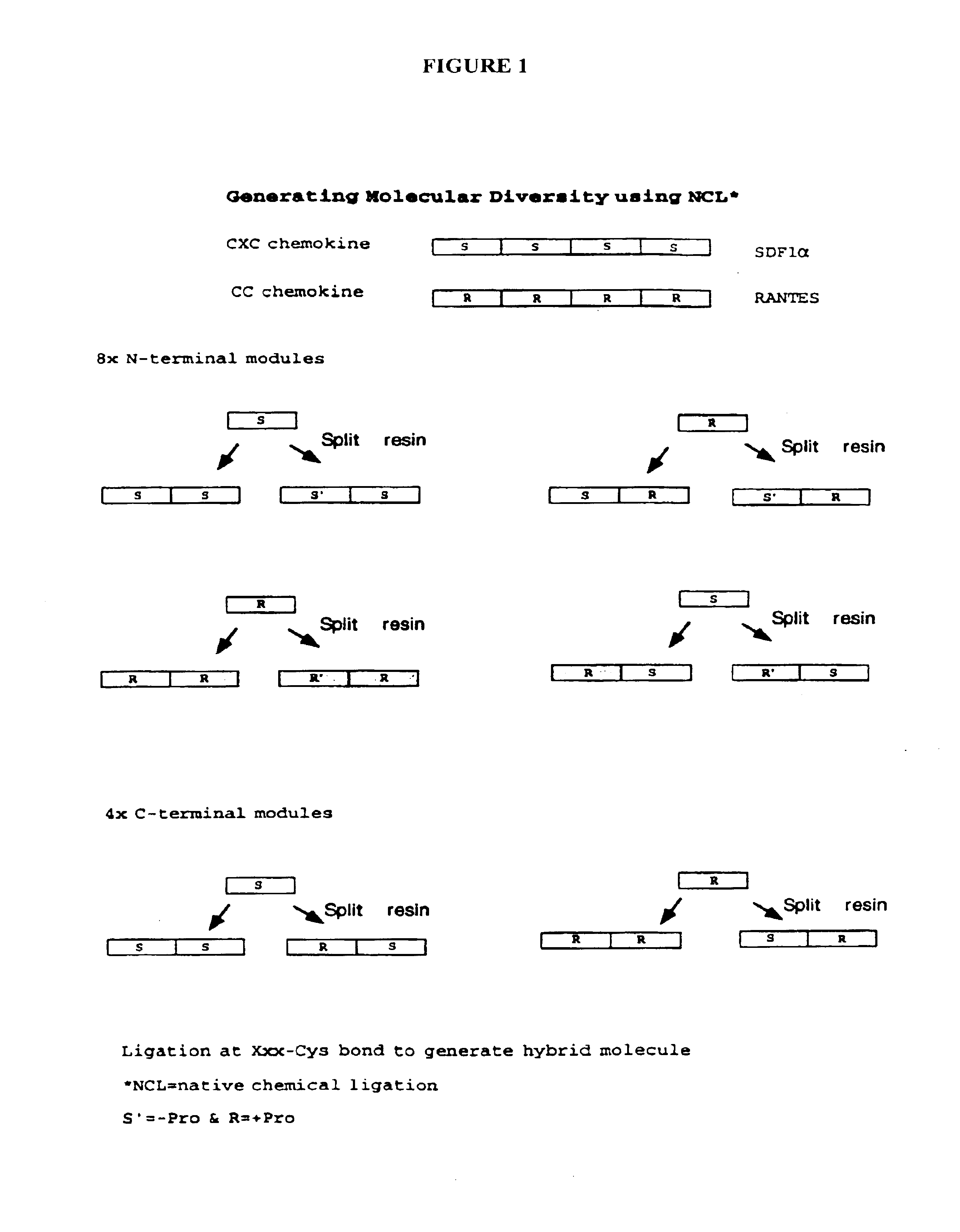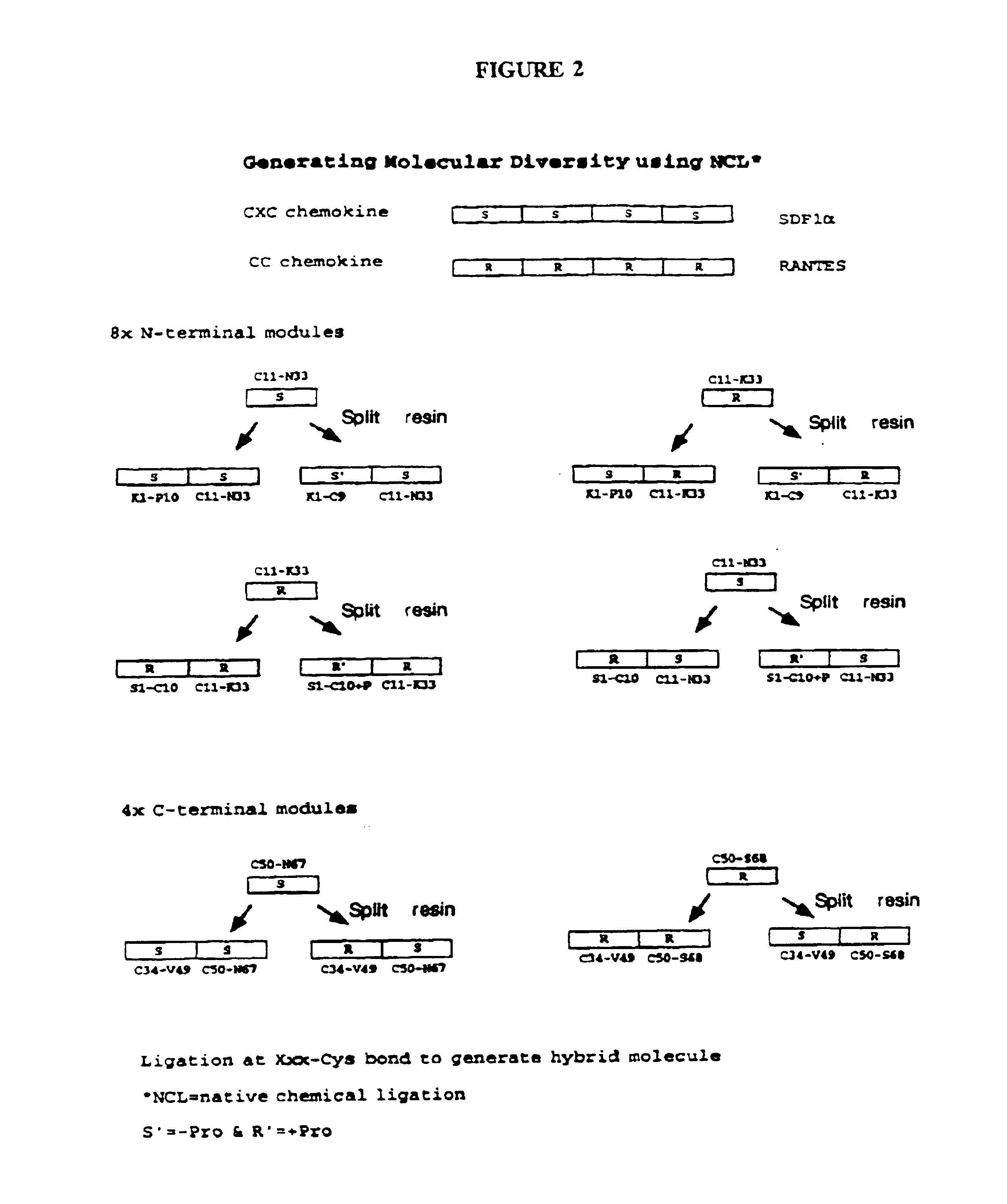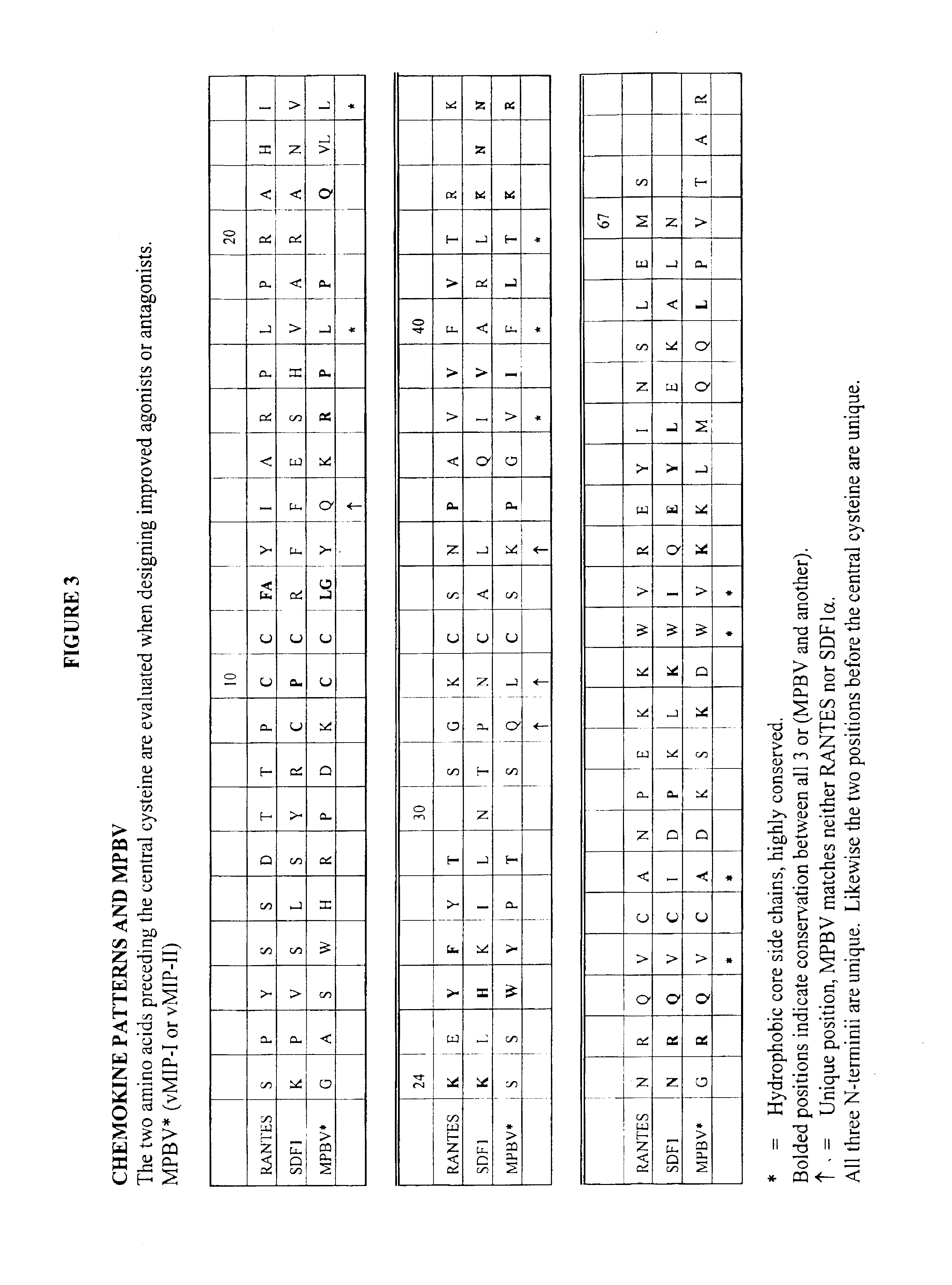Modular protein libraries and methods of preparation
a technology of protein libraries and modules, applied in the field of modules of protein molecules and modular protein libraries, can solve the problems of limited natural products, limited biologically useful compounds, and limited diversity and functionality of large chemical libraries, and achieve the effect of high yield and efficient sour
- Summary
- Abstract
- Description
- Claims
- Application Information
AI Technical Summary
Benefits of technology
Problems solved by technology
Method used
Image
Examples
example 1
[0085]Identification of Functional Protein Modules for Synthesis of Cross-Over Chemokine Libraries
[0086]Chemokine patterns are compared on a linear amino acid sequence level and on a three-dimensional structural level to identify functional protein modules for the modular synthesis of cross-over chemokine libraries. Functional protein modules corresponding to homologous regions among the native chemokines are identified by alignment of segments of RANTES, SDF-1α, and the virally encoded chemokines vMIP-I and vMIP-II (See FIG. 3). Macrophage Derived Chemokine (MDC) and the Kaposi's sarcoma-associated herpes virus (KSHV) vMIP-I and II chemokines also are compared. Sequence alignment of RANTES, SDF-1α and the viral chemokines against the RANTES three-dimensional structure (Brookhaven Protein Databank, Brookhaven National Labs, N.Y.) using LOOK® software (Molecular Applications Group, Palo Alto, Calif.) identified sections of sequences that correlated with functional sections relative t...
example 2
[0088]Modular Synthesis Of Cross-Over Chemokine Libraries
[0089]The cross-over chemokine libraries are chemically synthesized using solid phase and native chemical ligation at Xxx-Cys residues. SDF-1α has been synthesized by stepwise solid phase peptide chemistry (Bleul et al., Nature (1996) 382:829) and (Oberlin et al., Nature (1996) 382:833). SDF1-α also has been synthesized by native chemical ligation. These techniques are employed to construct MPBV / MPAV, RANTES / SDF-1α cross-over chemokines discussed in the examples that follow. See in-situ neutralization Boc-peptide synthesis as described in Schnolzer et al., Int. J Peptide Protein Res. (1992) 40:180; chemical synthesis and native ligation of proteins as described in Dawson et al., supra; Muir, (1993) Current Opinion Biochem. 4:420; Canne et al., J. Am. Chem. Soc (1995) 117:2998; Lu et al., J. Am. Chem. Soc. (1996) 118:8518; and Lu et al., Biochemistry (1997) 36(4):673; and thioester resins for Boc-peptide synthesis as described ...
example 3
[0096]Modular Synthesis of Cross-over Chemokines Comprising Functional Modules from vMIP-I And vMIP-II
[0097]Novel viral cross-over chemokines are constructed by combining segments comprising functional modules from two related virally encoded chemokines. Functional protein modules corresponding to homologous binding sites on the surface of native chemokines are identified by alignment of segments (halves) of Macrophage Derived Chemokine (MDC) and the Kaposi's sarcoma-associated herpes virus (KSHV) chemokines against other known chemokines. Sequence alignment of the viral chemokines against the RANTES three-dimensional structure (Brookhaven Protein Databank, Brookhaven National Labs, NY) using LOOK® software identified sections of sequences that correlated with patches (putative binding sites) localized to the surface of the folded chemokines. Crossover chemokines are made by modular synthesis using native ligation at the central cysteine and folding of viral chemokine segments deriv...
PUM
| Property | Measurement | Unit |
|---|---|---|
| Mass | aaaaa | aaaaa |
| Mass | aaaaa | aaaaa |
| Mass | aaaaa | aaaaa |
Abstract
Description
Claims
Application Information
 Login to View More
Login to View More - R&D
- Intellectual Property
- Life Sciences
- Materials
- Tech Scout
- Unparalleled Data Quality
- Higher Quality Content
- 60% Fewer Hallucinations
Browse by: Latest US Patents, China's latest patents, Technical Efficacy Thesaurus, Application Domain, Technology Topic, Popular Technical Reports.
© 2025 PatSnap. All rights reserved.Legal|Privacy policy|Modern Slavery Act Transparency Statement|Sitemap|About US| Contact US: help@patsnap.com



